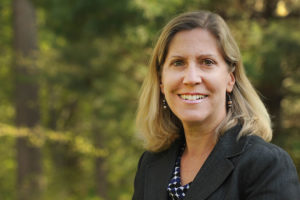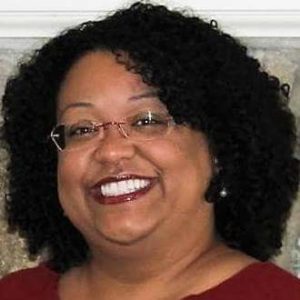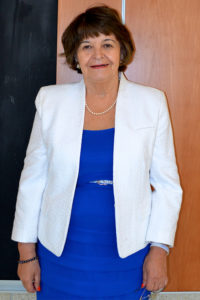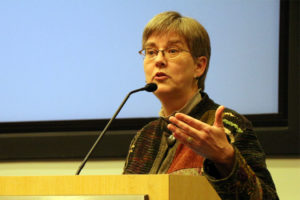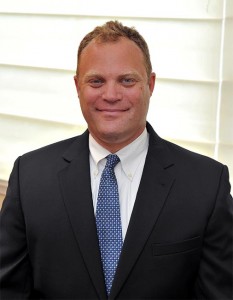 Progressive Voice is a weekly opinion column. The views and opinions expressed in the column are those of the individual authors and do not necessarily reflect the views of their organizations or ARLnow.com.
Progressive Voice is a weekly opinion column. The views and opinions expressed in the column are those of the individual authors and do not necessarily reflect the views of their organizations or ARLnow.com.
By: Gillian Burgess
Over Labor Day weekend, thousands of people enjoyed Arlington’s awesome network of safe, pleasant bike trails. Too often, however, the routes connecting our beautiful trails to the cafes, coffee shops and retail in the more urban parts of Arlington do not feel safe and comfortable for most people to bike on. Thousands of people stick to the trails and miss out on a lot of what Arlington has to offer.
The Bike Friendly Ballston wants to change that: The Washington Area Bicyclist Association’s Arlington Action Committee is calling on Arlington County to build protected bike lanes on North Quincy Street between the Custis Trail (along I-66) and Glebe Road.
Protected bike lanes provide the experience of biking without cars, but at a fraction of the cost of building a trail.
Most protected bike lanes, like the ones Arlington already installed in Pentagon City, flip the painted bike lane and the parking lane, so that the streetscape become sidewalk, curb, bike lane, then a buffer, parked cars, moving cars and the double yellow line — with the reverse order for traffic traveling in the other direction.
Some protected bike lanes, like those on 15th Street NW in D.C., put both bikes traveling in both directions against one curb, so the streetscape is sidewalk, curb, two-way protected bike lane, buffer, parking, one direction of moving traffic, the other direction of moving traffic, parking, curb and sidewalk.
To install a protected bike lane, the county needs only to put down some paint, put up a few flex-posts and add signage. When a street is repaved, installing protected bike lanes is practically free.
On Quincy, protected bike lanes would give people a low-stress route from the Custis Trail into the heart of Ballston. They would also connect to 5th Street North, which ends just before Quincy and Glebe, and is a great neighborhood road to bike on through Ashton Heights and Lyon Park.
By replacing the painted bike lanes that currently appear and disappear on this stretch, they would give people who do not feel comfortable riding a bike alongside moving cars the opportunity to connect to Washington-Lee High School, the Central Library and surrounding parks, and all of the shopping, dining, and coffee available in Ballston.
Protected bike lanes on Quincy would be good for everyone using Quincy Street. Because protected bike lanes feel safer, people would bike on the sidewalk far less, leaving the sidewalks free for people walking. Having a clear space for bikes would also reduce the complicated and confusing interactions that currently take place between people driving and biking on Quincy, especially around Washington Boulevard, where the current bike lanes suddenly disappear.
Protected bike lanes are also good for business. Already, about four times as many people bike on the Custis Trail as bike on Quincy. With a safe option, people would be enticed to enjoy all of the amenities Ballston has to offer. And study after study shows that people on bikes shop locally more often and spend more locally overall than people in cars. A quick stop at Buzz is easy on a bike, when you don’t have to worry about parking your car.
This proposal was brought to the County Board in February, and the entire Board was supportive of the project (discussion starting around nine minutes in the video). In March, the county manager told the board “we can do it” (discussion starting around 1:17 in the video). This month, we should finally get to see some plans.
The Bicycle Advisory Committee is set to meet with county staff to walk through some options next week (Monday, Sept. 12 at 7 p.m. on the Quincy Street side of the Central Library) and the Arlington Action Committee will meet with county staff the following week (Monday, Sept. 19 at 7 p.m. at a yet-to-be-determined location). Both meetings are open to the public.
Bike Friendly Ballston already has the support of over 600 people, most of the businesses along the route, and two surrounding neighborhood associations. You can find out more and lend your support by heading to http://www.waba.org/advocacy/campaigns/bike-friendly-ballston/.
Gillian Burgess is the current chair of Arlington County’s Bicycle Advisory Committee, the founder of Kidical Mass Arlington, and the former vice chair of APS’s Multimodal Transportation and Student Safety Special Committee. She lives in Cherrydale with her husband and three children.


